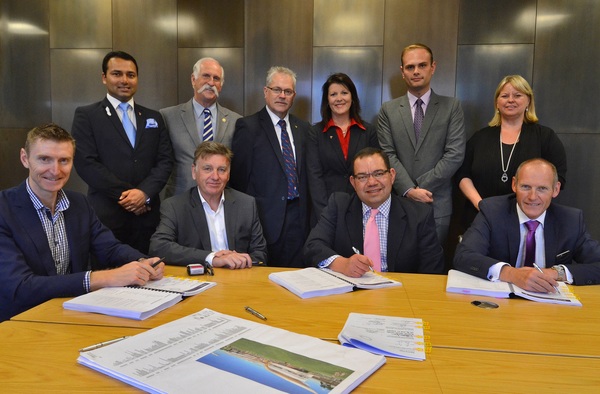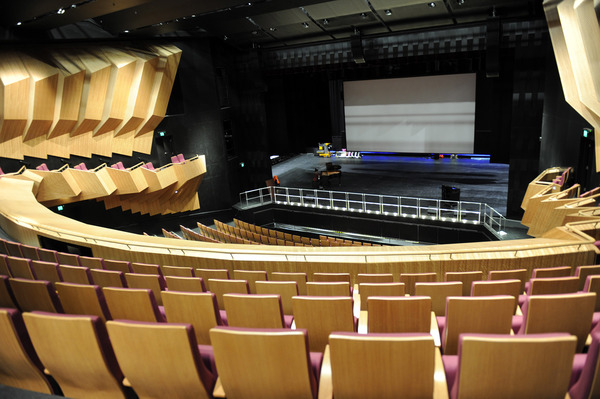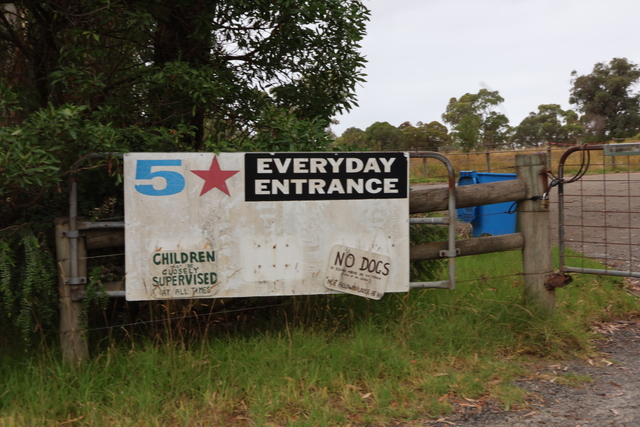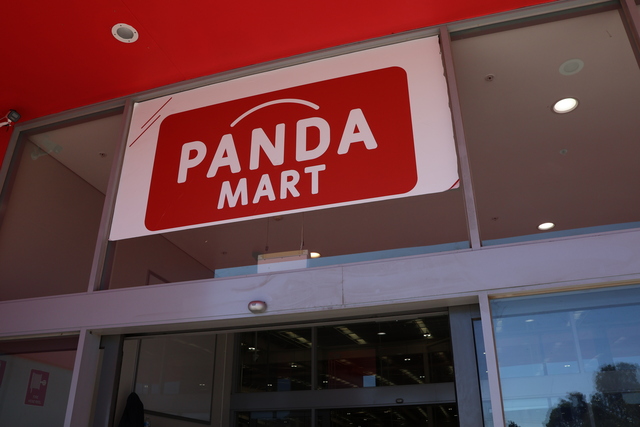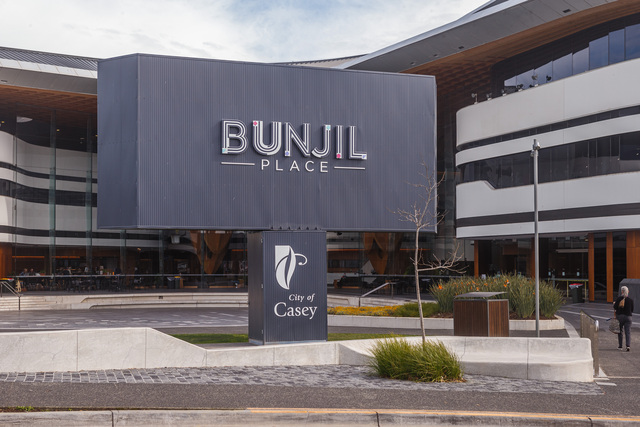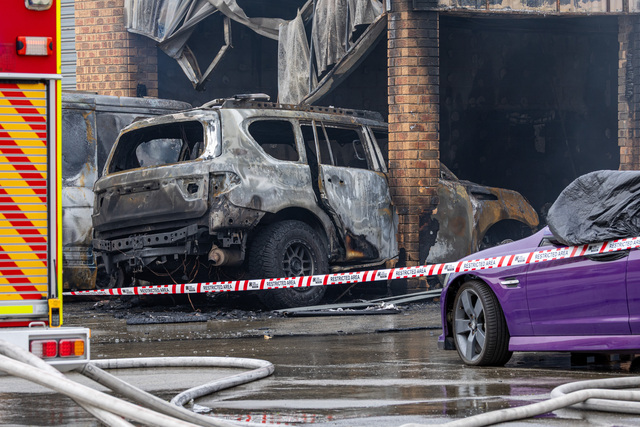In late 1994, just over 25 years ago, the then Kennett government forever changed the shape of local democracy in Victoria, sweeping away 210 colonial-era councils in favour of 78 new municipalities through forced mergers and appointed commissioners. On the 25th anniversary of the council sackings, ANDREW CANTWELL talked with Casey City’s longest serving councillor Wayne Smith about that radical time of change.
As a firey-eyed thirty-something in the early 1990s, teacher Wayne Smith wanted to see more done for the performing arts in the outer South East.
He argued to anyone who would listen that there were not enough facilities for live theatre and performances.
During a conversation with then Dandenong mayor Barry Powell, Wayne was challenged to ‘make a difference’ – to stand for council and then get on and do what he’d been arguing for.
Challenge accepted.
Wayne had been for 10 years the school council president of his kids’ school at Hampton Park East – now River Gum Primary School – and had a reasonably high profile as an active and engaged member of the community there.
In 1993, he was elected to the Cranbourne Shire Council as one of two councillors for the North Riding, representing Hampton Park’s 15,000 to 20,000 ratepayers.
Wayne recalls there being a striking contrast between the shire’s rural and urban areas. He said the old Cranbourne Shire was considered a rural shire, being on the approach to the outer Melbourne suburbs – but was rapidly changing, being in a recognised growth corridor and having ever-expanding housing estates.
The rapid urbanisation and population growth of the shire was recognised on 15 April 1994 when the shire was proclaimed a city. Premier Kennett and Victorian Governor Richard McGarvie attended, and Wayne recalls the occasion was celebrated with a lot of pomp and ceremony.
He said the council decided to pursue city status as the population at that time warranted the change, with every indication that the rapid urbanisation would continue for some considerable time.
Not long after, councils around the state were unsettled by forced mergers in several inner city areas.
Speculation was rife that the government was considering other areas, and there were rumours of a blueprint carving up the rest of the state along new municipal lines. A local government review was announced, and most councils put in submissions in terms favouring their own retention.
By 3 December, the speculation and jockeying was ended by the dismissal and dissolution of all remaining councils. Commissioners were appointed to oversee the transition to the new council structures, placing the larger new councils on a more business-friendly footing featuring better economies of scale, Compulsory Competitive Tendering and resource sharing between neighbouring councils.
Wayne said the Cranbourne merger was protested, as – under the new City of Casey – Cranbourne lost Carrum Downs and Langwarrin to Mornington Peninsula Shire, a northern industrial area to Greater Dandenong and a great swath of farmland to the east to the new shires of Cardinia and Bass Coast.
Wayne said the split had been justified in terms of the population, but the new Casey entity lost a valuable employment base and became more of a dormitory suburb.
It’s only more recently that Casey was clawing back an industrial base, Wayne said.
Gone too was the abrupt contrast between the rural and urban qualities – and that choice of lifestyles – that Cranbourne had enjoyed, with Casey being predominantly residential, and what farmland remained being mostly earmarked for subdivision.
Gone, too, was the rich, diverse history of the old shire, formed in the 1860s – just 15 years after the State of Victoria was itself separated as a distinct colony from New South Wales – and a good 30-odd years before Australia became a nation.
Life under the commissioners was brisk and business-like, Wayne said. Council meetings were short, with very little discussion, and with commissioners resolving to adopt officers’ reports for the most part.
The commissioners had oversight of the running of the new council, but the bulk of work was done by council officers. Wayne said the success of the transition was due in no small part to officers and staff doing the groundwork.
Some hard decisions were made during that time – including the disposal of the purpose-built shire offices on Sladen Street, in Cranbourne.
This was a hot-button issue as everyone – including the government – could see the building being required at some time in the future. Even the government agreed that Casey would continue to grow and would need to be split, perhaps in another 20 years.
“So why sell the building,” Wayne said.
He said that on this matter, he and the State Cranbourne MP Gary Rowe (now a fellow Casey councillor) were at “complete loggerheads”.
Wayne said the only consolation was the building went to Monash Health, for a good purpose.
Other big decisions made under commissioners were around staffing levels, with many job losses under the restructure at all levels.
Wayne said that, to their credit, commissioners met with all former councillors and they were encouraged to stay involved with their communities, while also being invited to stay involved with certain things. Wayne, for example, helped choose the City of Casey logo, and sat on a few awards committees.
But the relationship with the commissioners was at times testy. Wayne recalls disagreeing on a number of occasions with commissioners.
The Casey restructure took a little longer than most other new councils, and it wasn’t until 1997 that democratic elections were restored.
Wayne stood again, and was “lucky enough” to be elected and then made Casey City’s first mayor.
Wayne said the election was at an awkward time, as he’d just started at a new school. Because he took on full-time mayoral duties, he was forced to resign his new teaching position.
“They were fair to a point,” Wayne said. “But I had to resign.”
But at the end of his year as mayor, the position at the school opened up again and they took him back.
Wayne said that as mayor, he recognised the first duty of the council was to restore trust in the elected council.
“The priority in the first year was to let the community back in – to let them know that we were there for them, and that they could rely and count on us,” Wayne said.
Under the commissioners, the community just didn’t have access to the leaders, Wayne said.
“We had to do a lot of work to re-establish those connections,” he said.
“I think we did pretty well – but it took a few months, I think.”
One of the benefits of being the first mayor, he joked, was saying to various groups that he was the “youngest mayor Casey had ever had”, or the “most handsome”, or the “most approachable”.
In the 22 years since the restoration of elections, Casey has continued to consolidate as a part of metropolitan Melbourne, Wayne said.
“Cranbourne never was,” he said. “It was on the fringe of the city.”
But, he said, there was no doubt Casey was in a stronger position.
“Casey has shown that growing big is good,” he said.
This was due to the economies of scale and the buying power Casey could bring to bear.
But some things are markedly different.
“When we were a shire, the basketball, say, could ask council ‘can you paint lines for the courts’ and they’d say ‘yeah, we’re near, we can do it on Friday’ and it may have cost a few beers,” Wayne laughed.
“There’s a lot more red tape now.”
Councils are also a lot more risk averse.
“Take OH&S – I work for the Department of Education, and at one time we’d let the kids climb trees and have a fall – it was like a rite of passage, a part of growing up.”
Another area that’s been difficult for the community to adjust to is the role of councillors.
Wayne said the mayor had the only full-time position on the council – all other councillors were part-time, and most had other jobs.
“I have people ringing me saying ‘why don’t you do this’ – it’s not a full-time job, but you’re expected to be on call and across things 24/7.”
It was the arts that brought Wayne to council, and he believes the arts will his legacy.
“I have in Casey put arts on the map,” he said.
Not only did others on council look to him for leadership in that area, but he was recognised as the strongest voice pushing for Bunjil Place as a multi-use civic centre, with a theatre and gallery having pride of place.
“Who could have imagined we’d have something like Bunjil Place – a centre so widely approved of,” he said.
Wayne said the centre had envisaged attracting the bold target of a million people a year. In two years it had seen five million through the doors, he said.
“That makes me pretty proud.”
“Full credit to the council, he said. “They were behind it all the way – with a lot of arguing behind the scenes – be we got there.”
Wayne said the venue was now sought after by artists.
“There are some big names, and they’re choosing to come to Casey – we’re not chasing them,” he said.
Comedians were also keen to appear here, with a number enjoying sell-out shows.
“It’s fantastic that people don’t have to drive into the city,” he said.
“Leo Sayer, Jimeoin … The Australian Ballet sold tickets for $120 in the city but you could see them for $90 in Casey…”
The venue is in use by local and regional schools, too, because of the size of the performing space and seating areas.
“There have been three or four this week alone,” he said.
“These were schools that used to go to Frankston or Warragul.”
He said the more people who used it, the cheaper it would be for everyone – in the long run.
“We know the ratepayers have embraced it because they’re the ones going there and using it.”
“That’s my legacy – I’m very proud of that,” he said.


